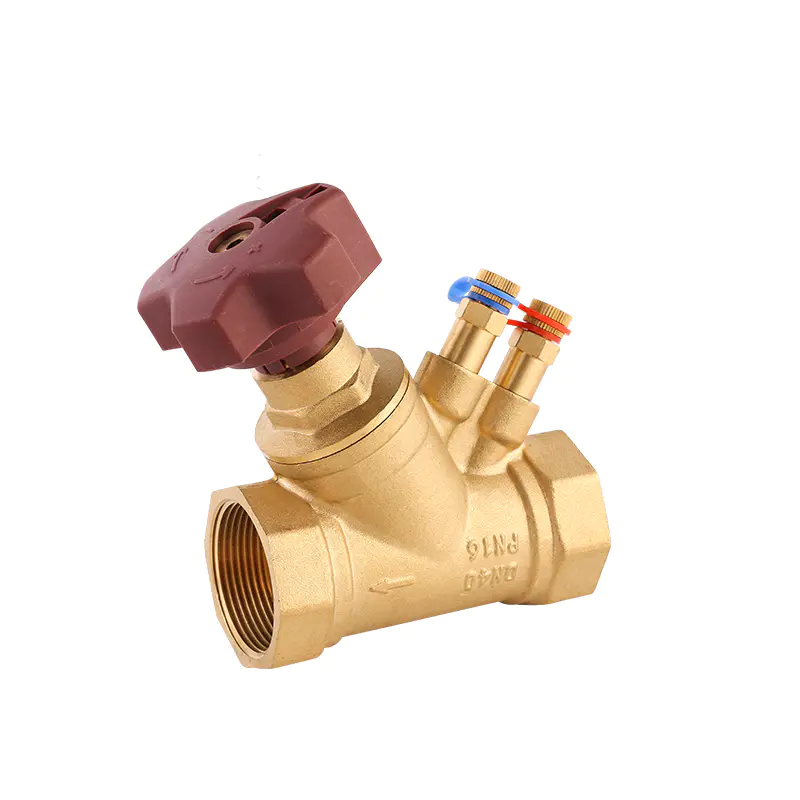OEM Custom Traditional Corner Polished Brass Radiator Valves Manufacturer In the world of home comfort, the radiator valve is a small but mighty hero. It's the unsung savior that ensures your home is ...
Product Category:
Product:
We can save cost and create value for you
Our Products
-

Static Digital Lock Balance Valve
-

1/2′′-2′′inch Brass Digital Lock Balance Valve
-

Dynamic Brass Balance Valve
Brass Balance Valves Manufacturers
Balance valve is in the hydraulic condition, play a dynamic, static balance adjustment valve. It is by changing the clearance between the valve core and valve seat, adjust valve Kv (valve flow capacity )to alter the flow through the valve the flow resistance in order to achieve the purpose of flow adjustment of the function object is the resistance of the system, eliminate the resistance unbalance phenomenon in the system, thus to new water allocation proportion according to the design and calculation of balance, each branch in proportion to increase or decrease at the same time.
25 years of experience
Zhejiang Huibo Valve Technology Co., Ltd.
Zhejiang Huibo Valve Technology Co., Ltd. is a leading Wholesale Static Balancing Valves Manufacturers and Brass Balance Valve Factory in the valve industry, with more than 25 years of experience, specializing in the field of HAVC system parts and brass valves. Huibo Valve has its own factory, which is located in Yuhuan County, Zhejiang Province, the hometown of brass valves in China.Now as the top manufacturer of high quality HAVC system parts and brass valve, our main products cover brass manifold, stainless steel manifold, thermostatic radiator valve, manual radiator valve,balance valve, motorized valve, air vent, ball valve, gate valve, gas valve, check valve, brass fittings and so on with more than 40 series and 2000 varieties.

CERTIFICATE
OUR LATEST NEWS
-
How Radiator Valve Manufacturers Tailor to Your Needs?
Read More + -
The Role of Radiator Valve Manufacturers in Modern Homes
Read More +Wholesale Custom Traditional Chrome Nickel Radiator Valves Manufacturer In the quest for energy efficiency and comfort, the role of radiator valve manufacturers has become increasingly significant in ...
-
Why is a radiator valve manufacturer important in the art of heating?
Read More +Sale OEM Square Angled Traditional Straight Radiator Valves Manufacture The art of heating is a delicate balance of aesthetics, efficiency, and comfort. It's not just about warming a space, but doing ...
-
A Guide to Choosing the Right Radiator Valve Manufacturer
Read More +China Cheap Radiator Brass Angled Radiator Chrome Corner Valves Manufacturer When it comes to home comfort and energy efficiency, the role of radiator valves cannot be overstated. These small but cruc...
Industry Knowledge Extension
The Application of Brass Balance Valves
The Functions of Static Balancing Valves

 English
English Español
Español русский
русский Deutsch
Deutsch










